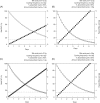Managing bile acid diarrhoea
- PMID: 21180614
- PMCID: PMC3002596
- DOI: 10.1177/1756283X10377126
Managing bile acid diarrhoea
Abstract
Bowel symptoms including diarrhoea can be produced when excess bile acids (BA) are present in the colon. This condition, known as bile acid or bile salt malabsorption, has been under recognized, as the best diagnostic method, the (75)Se-homocholic acid taurine (SeHCAT) test, is not available in many countries and is not fully utilized in others. Reduced SeHCAT retention establishes that this is a complication of many other gastrointestinal diseases. Repeated studies show SeHCAT tests are abnormal in about 30% of patients otherwise diagnosed as diarrhoea-predominant irritable bowel syndrome or functional diarrhoea, with an estimated population prevalence of around 1%. Recent work suggests that the condition previously called idiopathic bile acid malabsorption (BAM) is not in fact due to a defect in absorption, but results from an overproduction of BA because of defective feedback inhibition of hepatic bile acid synthesis, a function of the ileal hormone fibroblast growth factor 19 (FGF19). The approach to treatment currently depends on binding excess BA, to reduce their secretory actions, using colestyramine, colestipol and, most recently, colesevelam. Colesevelam has a number of potential advantages that merit further investigation in trials directed at patients with bile acid diarrhoea.
Keywords: Crohn's disease; SeHCAT; bile acids; colesevelam; colestipol; colestyramine; fibroblast growth factor 19; functional diarrhoea; irritable bowel syndrome; malabsorption.
Figures


References
-
- Andreyev J. (2007) Gastrointestinal symptoms after pelvic radiotherapy: a new understanding to improve management of symptomatic patient? Lancet Oncol 8: 1007–1017 - PubMed
-
- Bajor A., Kilander A., Fae A., Galman C., Jonsson O., Ohman L., et al. (2006a) Normal or increased bile acid uptake in isolated mucosa from patients with bile acid malabsorptio? Eur J Gastroenterol Hepatol 18: 397–403 - PubMed
-
- Bajor A., Kilander A., Galman C., Rudling M., Ung K.A. (2006b) Budesonide treatment is associated with increased bile acid absorption in collagenous coliti? Ailment Pharmacol Ther 24: 1643–1649 - PubMed
-
- Bajor A., Ung K.A., Ohman L., Simren M., Thomas E.A., Bornstein J.C., et al. (2009) Indirect evidence for increased mechanosensitivity of jejunal secretomotor neurones in patients with idiopathic bile acid malabsorptio? Acta Physiol (Oxf) 197: 128–137 - PubMed
-
- Balesaria S., Pell R.J., Abbott L.J., Tasleem A., Chavele K.M., Barley N.F., et al. (2008) Exploring possible mechanisms for primary bile acid malabsorption: evidence for different regulation of ileal bile acid transporter transcripts in chronic diarrhoe? Eur J Gastroenterol Hepatol 20: 413–422 - PubMed
LinkOut - more resources
Full Text Sources
Other Literature Sources
Miscellaneous

